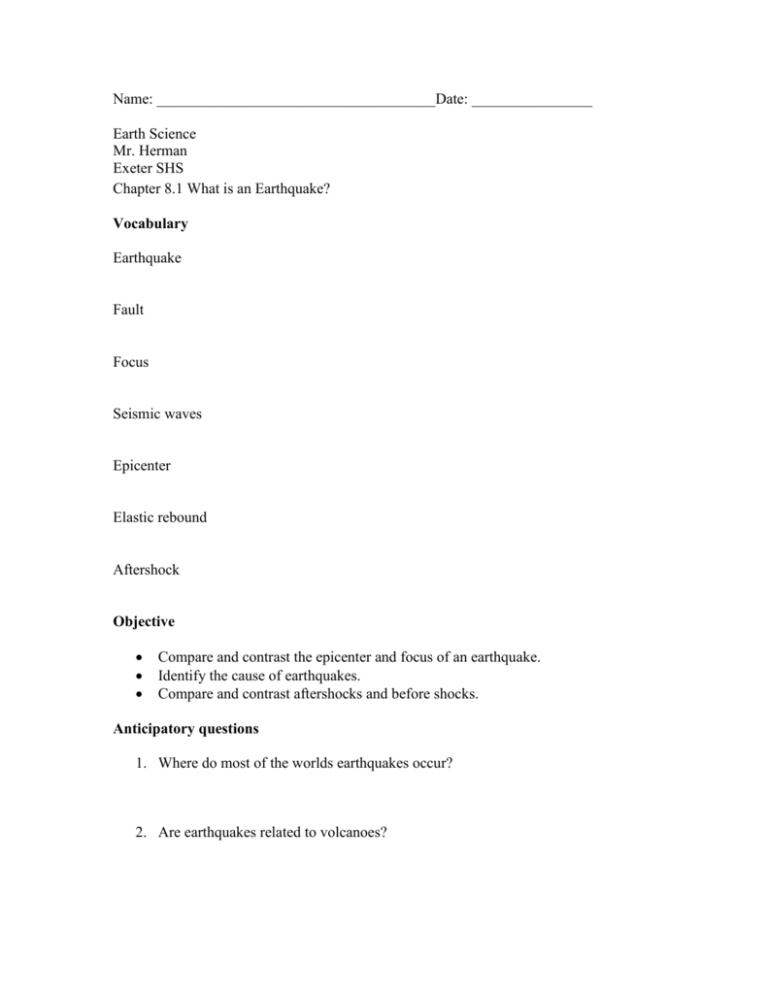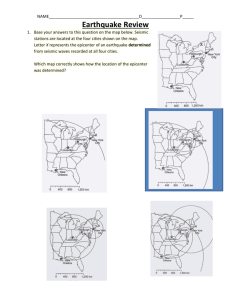Section 8.1 What is an Earthquake?
advertisement

Name: _____________________________________Date: ________________ Earth Science Mr. Herman Exeter SHS Chapter 8.1 What is an Earthquake? Vocabulary Earthquake Fault Focus Seismic waves Epicenter Elastic rebound Aftershock Objective Compare and contrast the epicenter and focus of an earthquake. Identify the cause of earthquakes. Compare and contrast aftershocks and before shocks. Anticipatory questions 1. Where do most of the worlds earthquakes occur? 2. Are earthquakes related to volcanoes? Earthquakes An earthquake is the vibration of Earth produced by the rapid release of energy Focus and Epicenter Focus is the point within Earth where the earthquake starts. Epicenter is the location on the surface directly above the focus. Faults Faults are fractures in Earth where movement has occurred. Cause of Earthquakes Elastic Rebound Most earthquakes are produced by the rapid release of elastic energy stored in rock that has been subjected to great forces. When the strength of the rock is exceeded, it suddenly breaks, causing the vibrations of an earthquake. Aftershocks and Foreshocks An aftershock is a small earthquake that follows the main earthquake. A foreshock is a small earthquake that often precedes a major earthquake. Earthquake Waves Seismographs are instruments that record earthquake waves. Seismograms are traces of amplified, electronically recorded ground motion made by seismographs. Surface waves are seismic waves that travel along Earth’s outer layer. Body Waves • Identified as P waves or S waves P waves Are push-pull waves that push (compress) and pull (expand) in the direction that the waves travel Travel through solids, liquids, and gases Have the greatest velocity of all earthquake waves S waves Seismic waves that travel along Earth’s outer layer Shake particles at right angles to the direction that they travel - Travel only through solids Slower velocity than P waves A seismogram shows all three types of seismic waves—surface waves, P waves, and S waves.








